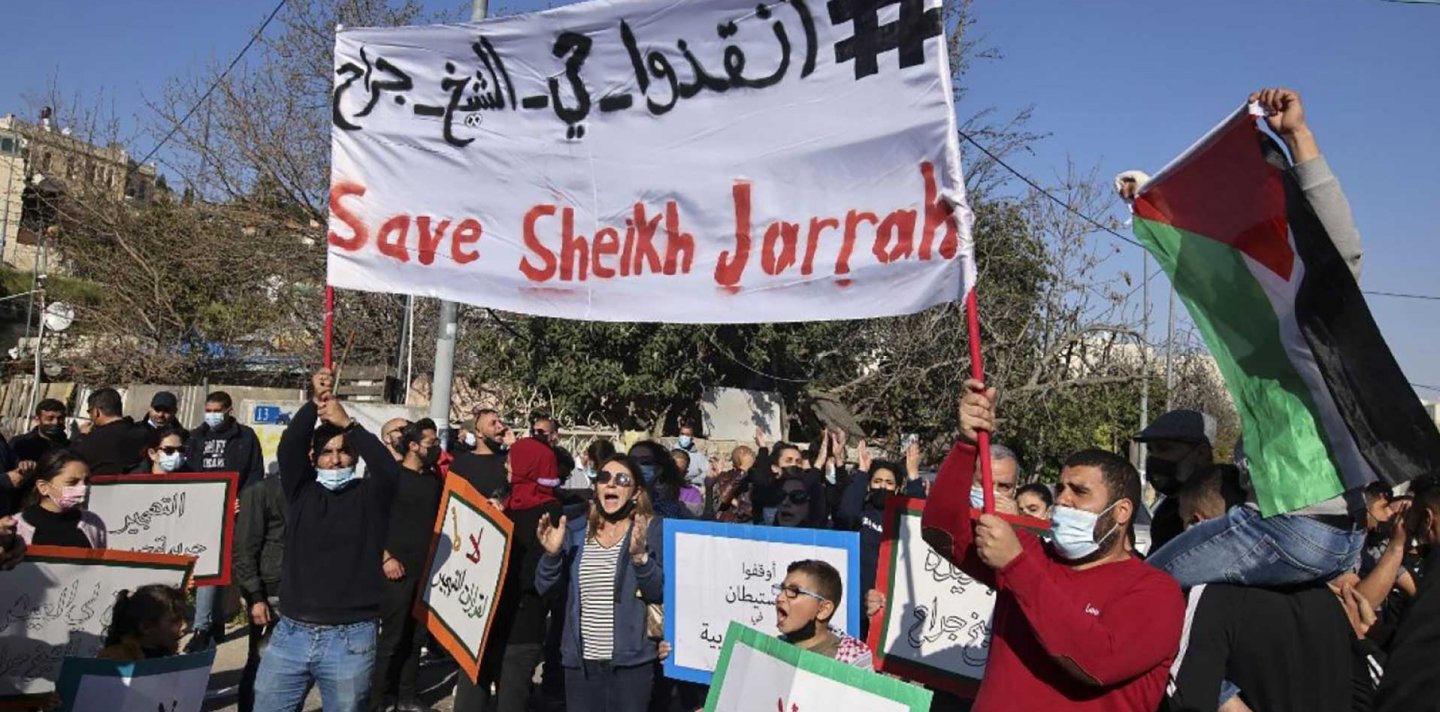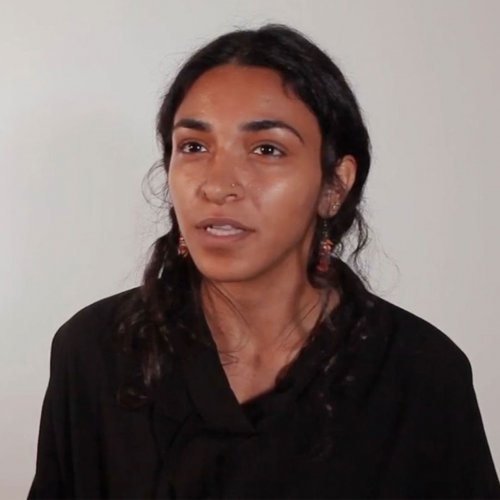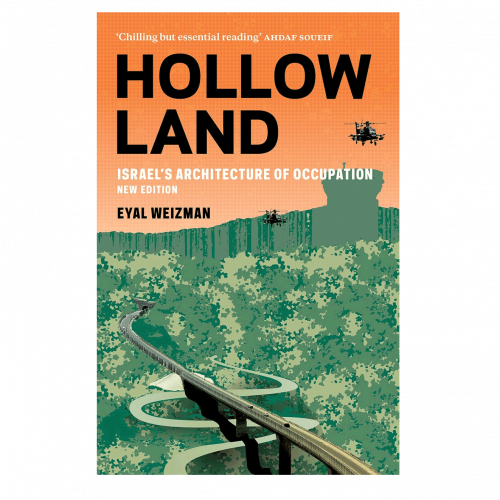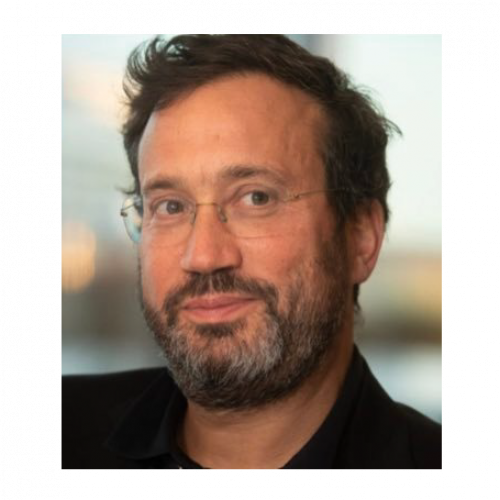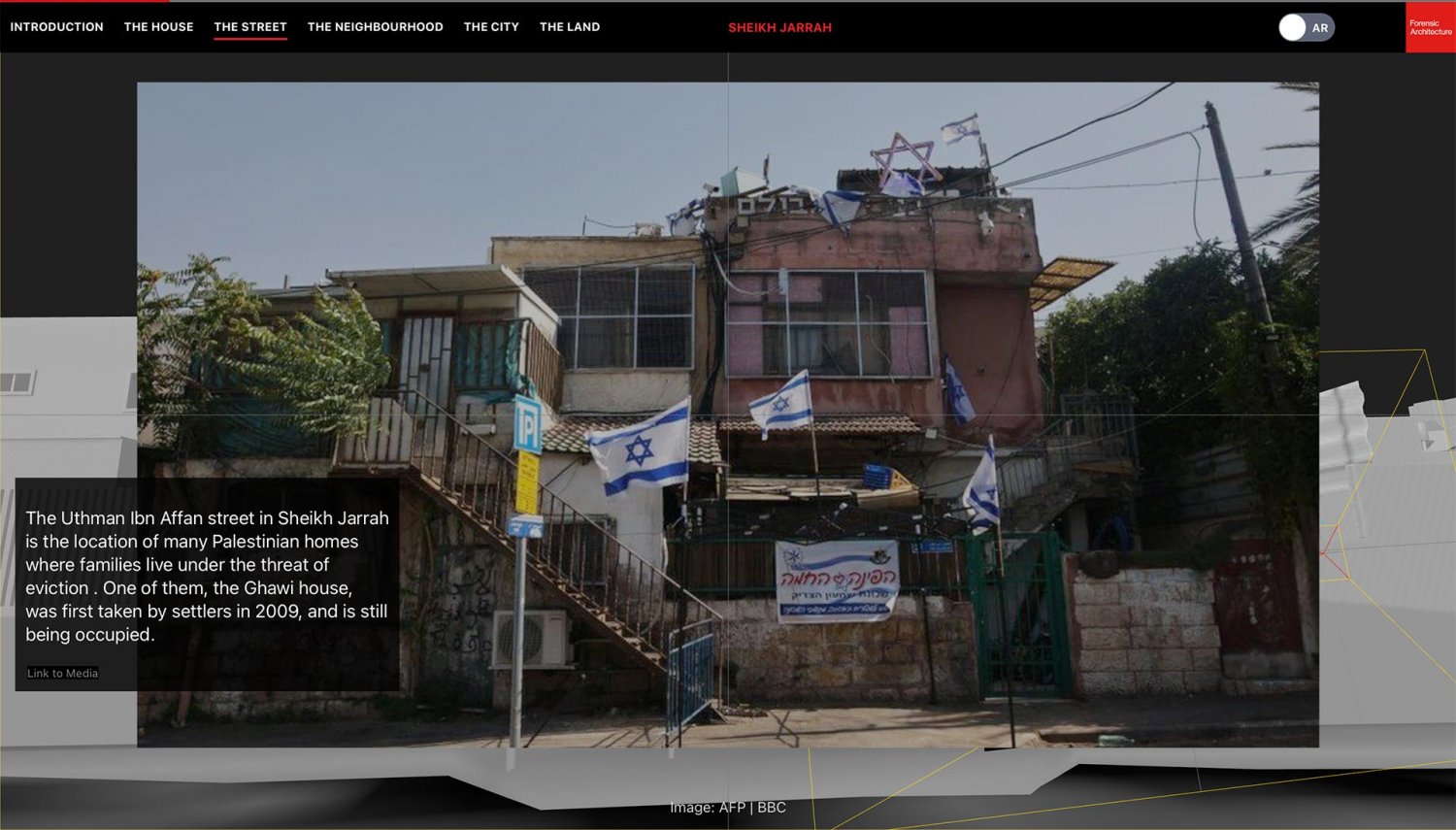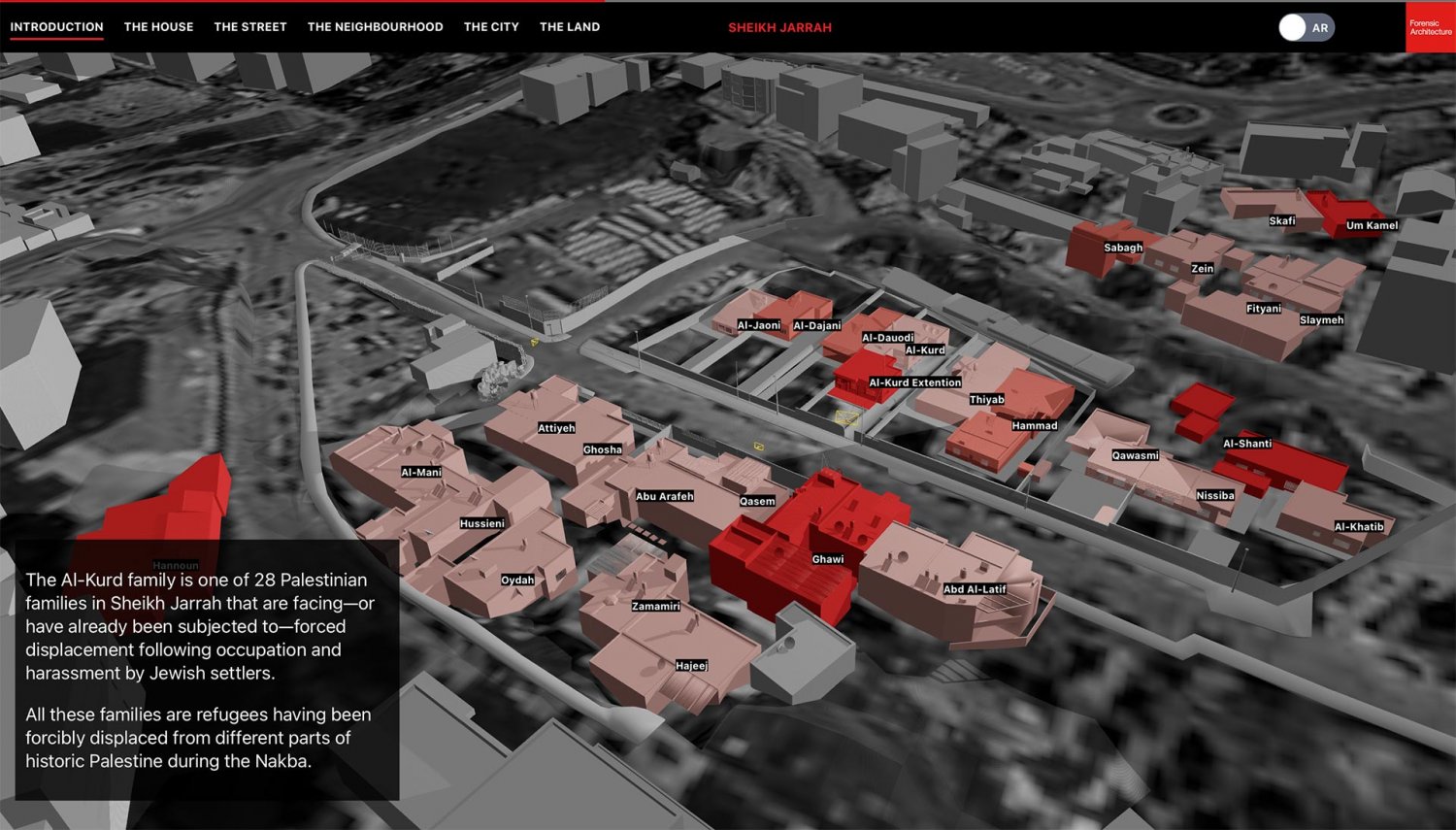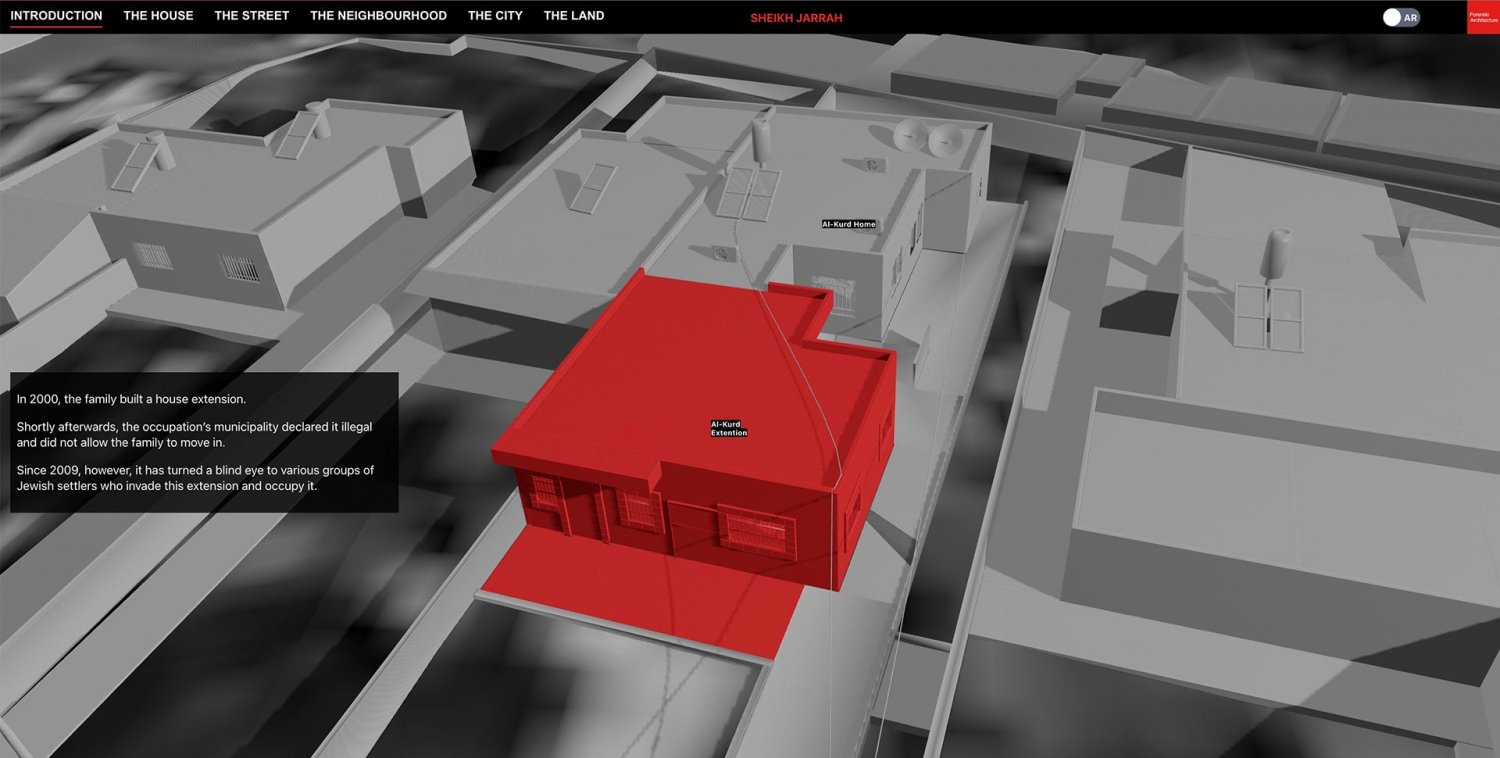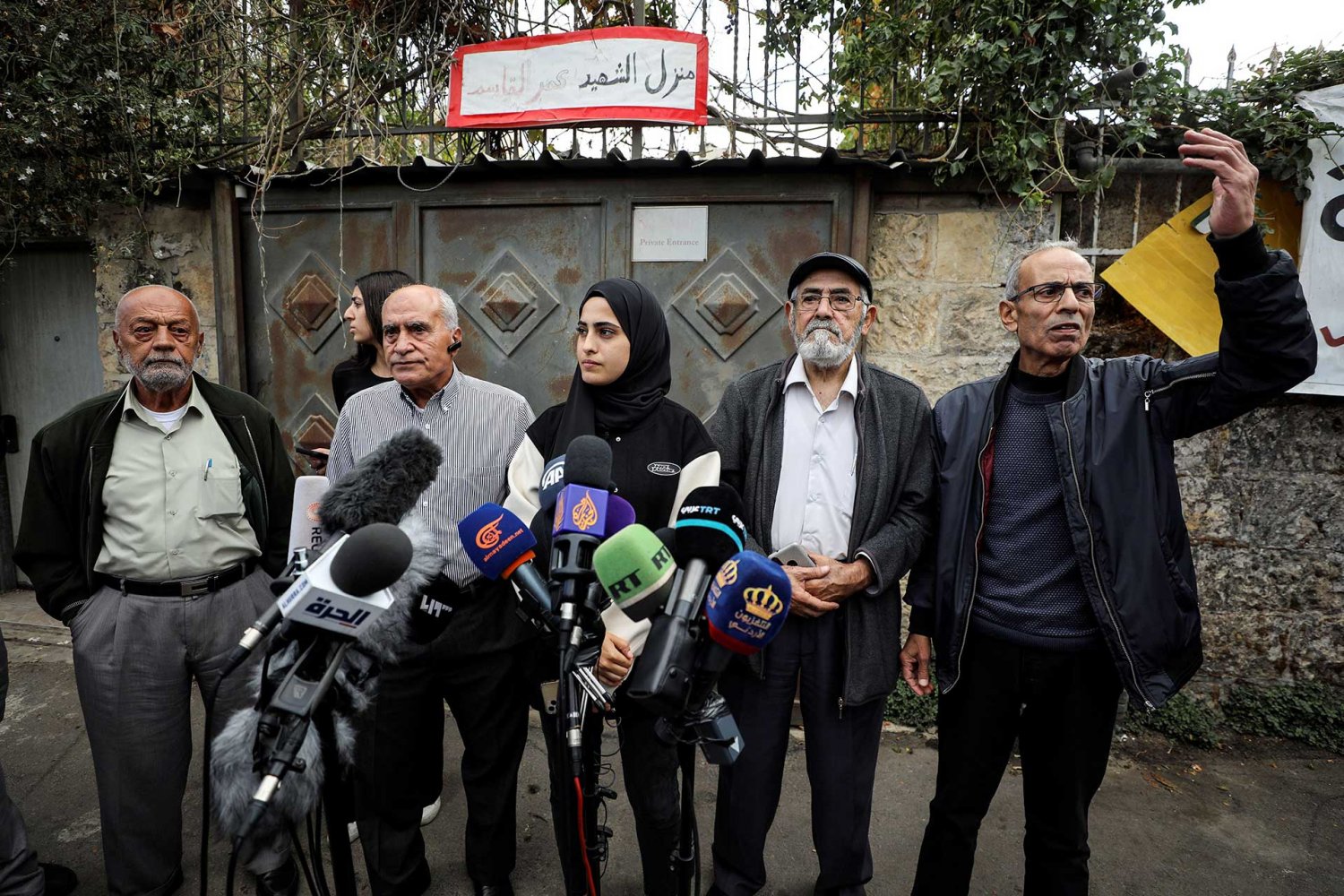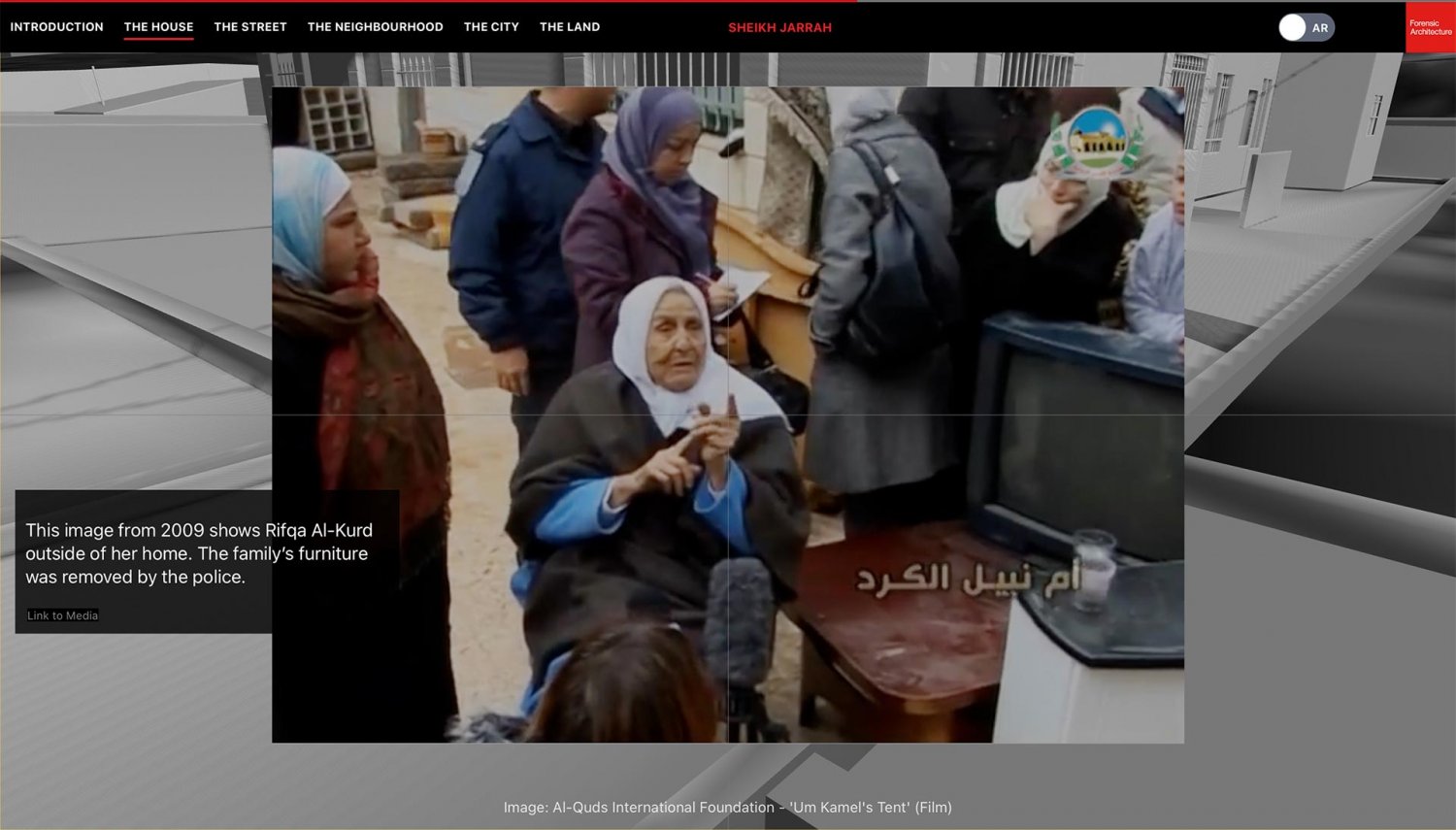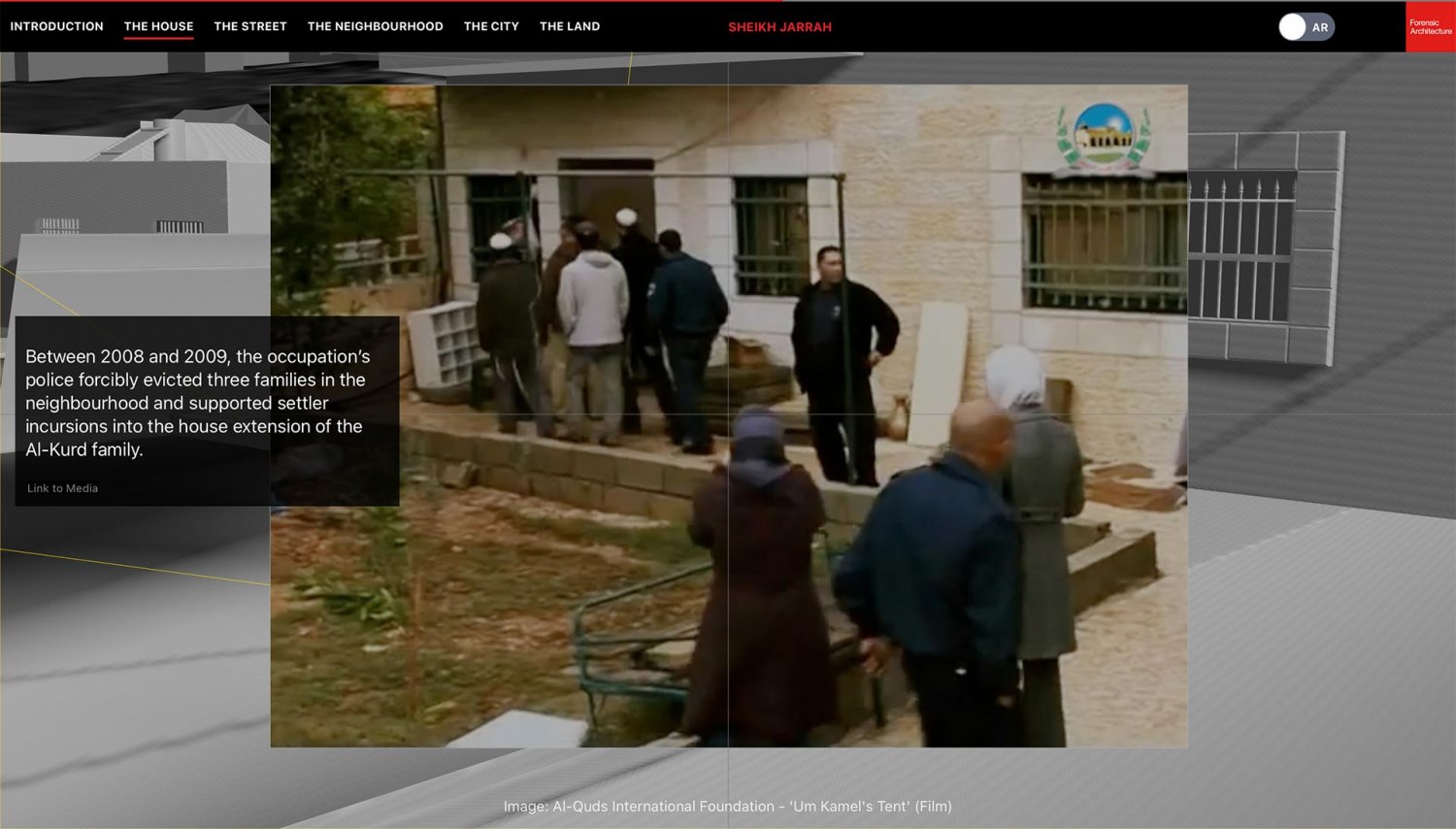In May 2022, Forensic Architecture released an interactive digital platform to convey an urban narrative, “Sheikh Jarrah: Ethnic Cleansing in Jerusalem.” Working with activists and lawyers in the city, Forensic Architecture designed and built the platform to explain “the policies and practices through which Palestinian families in the East Jerusalem neighborhood of Sheikh Jarrah are being forcibly displaced of their properties, and their protracted struggle with the Israeli courts and various settler groups.”1 As their website further explains: “The story traverses multiple scales starting from homes invaded by settlers, and moves to the street, neighbourhood, city and the land, showing how colonial practices and apartheid planning displace Palestinians.”2
We recently spoke to Nour Abuzaid, 33, an architect, computational designer, and web developer, who was the lead researcher on the project, to learn more about it.
Abuzaid, a Palestinian originally from Gaza who holds a master’s degree in architectural design from Istanbul Technical University, conducted spatial research and created an interactive urban narrative platform. She worked with her colleague Jumanah Bawazir, an assistant researcher who is also a multidisciplinary designer and poet.

